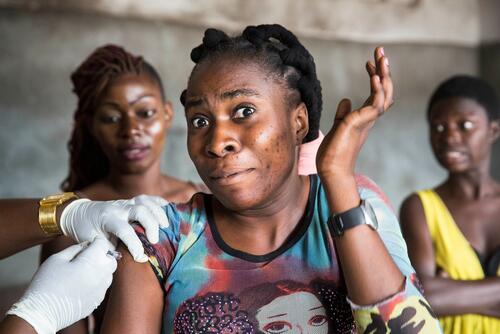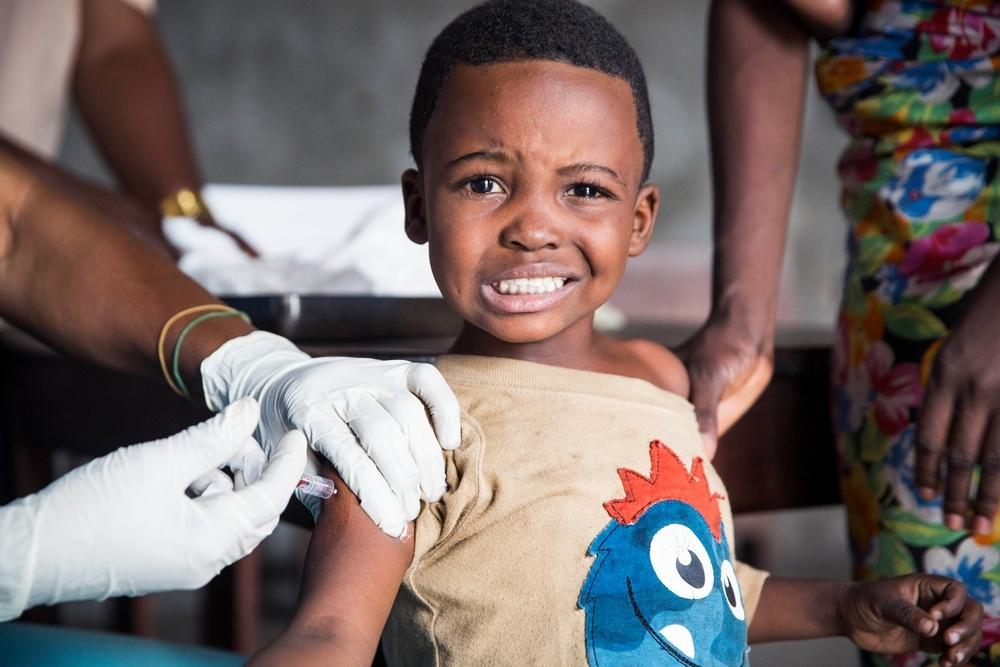Yellow fever
Yellow fever is a viral haemorrhagic disease. It is transmitted by infected mosquitoes, with the "yellow" in the name referring to the jaundice that affects patients in severe cases.
The virus is endemic in tropical areas of Africa and Central and South America, putting more than 40 countries at risk.
Although severe cases of the disease can be prevented with a vaccine, it claims the lives of an estimated 30,000 to 60,000 people every year.
There is currently no specific anti-viral drug for yellow fever but care to treat dehydration, liver and kidney failure, and fever improves outcomes. Vaccination remains the most effective method of prevention.
In 2023, MSF conducted vaccinations against yellow fever in response to outbreaks.
Spotlight: Democratic Republic of Congo
Yellow fever: Key facts
50%
OF SEVERE CASES ARE FATAL
40+
COUNTRIES AT RISK
12,983
YELLOW FEVER VACCINATIONS ADMINISTERED BY MSF IN RESPONSE TO OUTBREAKS IN 2023
Guide to yellow fever
The yellow fever virus is transmitted through the bite of infected female Aedes mosquitoes. Yellow fever occurs only in humans, other primates and several species of mosquitoes.
In urban settings, the Aedes aegypti mosquito is involved in transmitting the virus, the same genus of mosquito responsible for transmitting Zika, dengue and chikungunya fevers.
When the mosquito takes the virus from an infected person, the virus develops in the mosquito's body for about 12 days, after which the mosquito can transmit it to a healthy person.
Once a female mosquito is infected, it will continue to carry the virus throughout its life, which lasts one to two months. It can also transmit the virus to its offspring, although not systematically.
The disease is common in tropical and subtropical areas of South America and Africa. The A. aegypti is also found in tropical and subtropical areas of Asia, the Pacific, and Australia, but no cases have been recorded in these regions.
Yellow fever begins after an incubation period of three to six days. Many people do not experience symptoms, but when these do occur, the most common are headache, back pain, loss of appetite, and nausea or vomiting. In most cases, symptoms disappear after three to four days.
A small percentage of people, however, enter a second, more toxic phase of the disease within 24 hours of recovering from initial symptoms. They may experience recurring fever, this time accompanied by jaundice due to liver damage. Other signs of advanced yellow fever are dark urine, abdominal pain with vomiting and bleeding in the mouth, eyes or stomach.
Half of the patients who enter the toxic phase die within seven-10 days.
Yellow fever is difficult to diagnose, especially during the early stages. More severe cases can be confused with severe malaria, leptospirosis, viral hepatitis, other haemorrhagic fevers, infection with other flaviviruses (e.g. dengue fever), and poisoning.
Blood tests can sometimes detect the virus in the early stages of the disease. In later stages, testing to identify antibodies is needed.
There is currently no specific anti-viral drug for yellow fever. We respond to the disease by admitting patients to hospital and helping them to overcome the disease by treating the symptoms.
During the second, more toxic phase of the disease – when the virus disappears and the patient is no longer contagious – the most important thing is to prevent the liver from becoming necrotic.
The most effective method to combat yellow fever is prevention through vaccination. The yellow fever vaccine is safe, affordable and a single dose provides life-long protection against yellow fever disease.
MSF carries out vector control by using biocides (chemical or biological pesticides), while people should also avoid mosquito bites by wearing long clothing and using repellents.
The WHO and its partners have launched a global strategy to prevent, detect and respond to yellow fever suspected cases and outbreaks in 40 at-risk countries in Africa and the Americas. By 2026, it is expected that more than one billion people will be protected against the disease.
Yellow fever: News and stories


